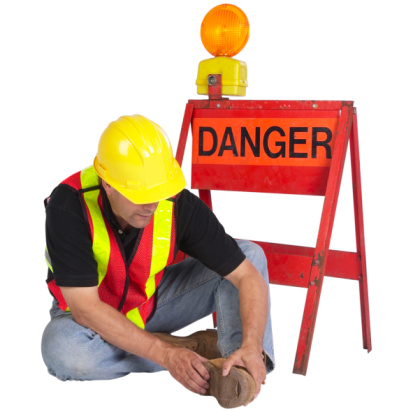Foot protection is a very important yet often neglected aspect of working at a place which has severe working conditions. But first, one must understand the type of categories foot injuries fall into. The first is injuries which are as a result of slipping on smooth surfaces, tripping on wires or falling down (from stairs, slops etc). They must be taken into account as they may have an effect on foot safety. The second category involves injuries which include sprains, skin punctures and lacerations.
Here’s a more detailed list of foot injuries at work place –
- Sprained or twisted ankles
- Crushed or broken feet,
- Feet trapped between objects
- Fractures due to slipping, tripping or falling down
- Feet caught in moving vehicles, machinery or conveyor belts
- Punctures via sharp metal, glass shards or even lose nails lying on the floor
- Lacerations or cuts on toes or feet
- Burns (due to molten metal or chemical splashes)
- Amputations (in extreme cases)
Needless to say, both the employer and employee should take care that there is ample foot protection at the work place. Failing to do so can have major impact on the employee’s health and physical well being. In fact, jobs where in the employees are required to stand for extended periods of time also fall under the requirement of foot wear protection and need safety shoes. This is because the human feet were created to be mobile, not stationary.
Standing in the same position for hours at end, day after day, can easily tire one’s feet. This can lead to pain, discomfort and fatigue, not to mention psychological issues like distraction due to pain, less alertness and a constant need to rest one’s feet. Medical complications can include the bones in the feet becoming misaligned.
How Can Foot Protection Be Incorporated In Work Places?
Foot protection can be incorporated in many ways. The first method is separation of machinery from pedestrian traffic, the second is to put up proper warning signs, and the third is making it mandatory for employees to wear safety shoes to work. Here’s a brief overview of what can be done –
- Separation of equipment (mobile) from areas of high traffic. Keep such equipment contained to a restricted area which allows only a few select employees access to it. If that is not possible, ensure the equipment is covered with proper fencing (wires, wooden planks etc) in order to deter people from getting near it, especially when it’s functioning.
- Installation of warning signs and safety mirrors. In areas where there is not a lot of light (or for those who work during the night time), make sure the warning signs and boards are painted in contrasted colours and are positioned in order to use angular lighting to ensure maximum vision.
- Ensure the floor is always clean after work is done on it so that all lose nails, broken glass or metallic wires are immediately swept and thrown into the dustbin.
- Make it mandatory for employees to wear appropriate safety shoes. So for those who are working down in mines or up high valleys or mountains, footwear with extremely solid grips and deep grooves would be the first priority. For those whose jobs require standing throughout the day, proper cushioning, comfort and breathability (of feet) should be their first priorities.
To know more about Foot protection & safety shoes, please visit http://www.moglix.com/

